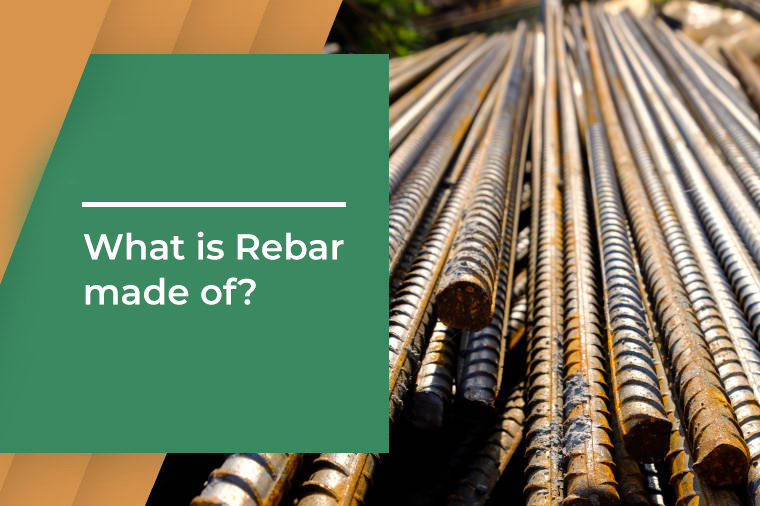What is rebar made of?

To All Our Valued Customers, Over the past few years, the Covid 19 Pandemic has forced us to adapt and change the way we do things on a day-to-day basis. Florida Lumber is no exception. To make sure that we remain strong and competitive in the market for the years to come, Florida Lumber has had to adjust and change our vision for the future. In the last 2 years, we have stopped selling Sheetrock and drywall products, roofing felt and roofing materials, and have even closed on Saturdays.
Over the last few months, we have been transitioning our way out of the door supply business so on August 31, 2022, our door shop will stop assembling doors. We will continue liquidating our doors from inventory until we are out of material.
Some customers have asked if we are closing or even moving locations. To set the story straight, we are not closing or selling the business and we are not moving. These changes are all part of our new vision and path to continue serving South Florida and increasing our footprint in the construction supply industry.
Our focus is going to be on Lumber, Construction Materials, Rebar Fabrication and Rebar Accessories. As we have liquidated some of the items that we don’t sell anymore we have created more space to buy a larger volume of our core items and pass on the savings to our customers.
In the next year you will start seeing changes that will help improve our ability to serve you, our customers. We appreciate your business and your patience as Florida Lumber’s new vision becomes reality.
A Todos Nuestros Valiosos Clientes En los ultimos anos, la pandemia de el Virus (Covid 19) nos ha forzado a adaptarnos y cambiar la forma de hacer cosas en el dia a dia. Florida Lumber no ha sido una excepcion.
Para asegurarnos de mantenernos fuertes y competitivos en el mercado en los anos venideros, Florida Lumber ha tenido que ajustar y cambiar nuestra vision para el futuro. En los dos ultimos anos hemos dejado de vender los productos de yeso (sheetrock), paneles de yeso (drywall), tela asfaltica (roofing felt), materiales de techo y cerramos los Sabados. En los ultimos meses, hemos estado en transicion para salir del negocio de suministro de puertas, en Agosto 31, del 2022 nuestra tienda de puertas dejara de construir y/o cortar puertas. Vamos a continuar liquidando nuestro inventario de puertas haste que terminemos todo el material. Algunos de nuestros clientes han preguntado si estamos cerrando o si nos estamos moviendo a otra localidad. La verdad es que no estamos cerrando, no estamos vendiendo y no estamos cambiando de localidad. Estos cambios son todos parte de nuestra nueva vision y camino a continuar sirviendo al estado sur de la Florida y incrementar nuestras huellas en la industria de suministros de construccion.
paneles de yeso (drywall), tela asfaltica (roofing felt), materiales de techo y cerramos los Sabados.
En los ultimos meses, hemos estado en transicion para salir del negocio de suministro de puertas, en Agosto 31, del 2022 nuestra tienda de puertas dejara de construir y/o cortar puertas.
Vamos a continuar liquidando nuestro inventario de puertas haste que terminemos todo el material. Algunos de nuestros clientes han preguntado si estamos cerrando o si nos estamos moviendo a otra localidad.
La verdad es que no estamos cerrando, no estamos vendiendo y no estamos cambiando de localidad. Estos cambios son todos parte de nuestra nueva vision y camino a continuar sirviendo al estado sur de la Florida y incrementar nuestras huellas en la industria de suministros de construcción.
2431 N.W. 20TH ST.
MIAMI, FL 33142
PHONE: (305) 635-6412
Sales Fax: (305) 633-4054
Accounting Fax: (305) 635-3723
Email: sales@tloridalumber.com

The construction process has evolved over the years with new ideas, approaches, and applications, all this to ensure longevity and greater building life. One such evolution is Rebar.
Since the concrete is very weak in tension, rebar helps to improve the tensile strength of the concrete. Rebar is a reinforcing bar. Generally, steel bars are used as rebar as steel’s thermal expansion nearly equals that of concrete.
Therefore, rebar enforces the tensile strength required for the concrete to stay in place and makes sure it will last as long as your structure does. Read along to understand what rebar is made of, how it can be recycled, and how & why it can be used in construction.
How Rebar is Made?
Rebar is usually made from a mild or high yield steel of grade 250 or 250 N/mm2 with great tensile strength. Steel (carbon or alloy) is melted down to liquid form, which requires an extreme amount of heat to achieve. Once melted, the liquid steel is pulled through small round openings to give the rebar its shape.
First, most rebar produced in North America is produced using an EAF steelmaking process, or Electric Arc Furnace. Here, scrap steel is collected from various sources at the steel mill and put into a large ladle where the steel is then melted at temperatures up to 1,800° Fahrenheit. In this state, the molten steel will be poured into a casting.
To make rebar, scrap steel undergoes several processes before turning into a finished product:
> Melt the steel
First and foremost, the steel is melted down to a liquid form, which requires an excessive amount of heat. The scrap steel collected is put into a large ladle and melted at a temperature of 1,800° Fahrenheit.
> Pour for shape
This melted steel is now poured into the tundish and fed into a series of casters where the steel takes its shape. Tundish helps to avoid splashing of the molted steel. The shape formed is known as billets and later on, it is processed to form the rebar.
> Roughing Mill
After the caster, the rebar goes to the roughing mill. Here, the larger billets are hot rolled into small shapes by continuously reducing the billet at each stand on the roughing position.
> Finishing Point
The billets are now passed through the intermediate section of the rolling mill. Here, the billets are given the shape of bars. From this intermediate section, the bars are passed through the finishing section to give them their final shape. Once the steel gets its final shape, it is given the twist and groves called the ‘tied knot’ shape. This shape ensures the rebar stays at a firm position while inside a structure.
> Cutting and cooling section
These bars now enter the cutting section, where they are chopped to a specific length as programmed by the mill operator. From here the bars are taken onto the cooling bed where the bars are cooled back to room temperature before being sold to the customer’s specific length.
Considering the hazardousness and to prevent any accidents from happening, the rebar ends are often covered with plastic caps.
> Distribution
The rebar is then bundled and packed according to customer specifications and distributed straight from the manufacturer to the job site.
Additional read: What Type of Rebar Grade is Right for Your Project?
Reuse and recycling of Rebar
Rebars can be costly and recycling them can help you gather funds for your next project. After the construction site is demolished, try looking for scrap companies or junkyards. They will pay you as per ton for all the scrap collected. If the rebars have concrete on them then the affected section can be cut off.
Also, make sure the rebars are long enough to be used later. It is also advisable to avoid rusted or corroded rebars, as they could pose a safety risk.
The scrap recycling can be combined with other steel products, re-formed, or melted down for any other shape.
How to work with it (Rebar)?
Depending upon the type of rebar they can have several applications. Rebars can be used in all types of construction such as floor slabs, stairs, and roof constructions.
> Certain kinds of rebars can be welded, but it is possible that the welding is weak and it won’t be able to bear any weight. ASTM A706 is the grade you are looking for in this case, this will surely give you a strong weld.
> Rebars can be used for forging, use in typical ironwork projects like making leaves, brackets, and much more.
> You can also machine it. Some large-size rebars are used as anchors. Meaning they’ll thread the ends and fit on a big nut.
Why & How Rebar Used in Construction?
Rebars are used in concrete construction, thus adding long-term strength to the building, foundation, pool, and other structures.
There are several ways in which rebars support reinforcement concrete construction such as:
> Primary Reinforcement – used to ensure that the structure can handle the load of the structural element and the environment where it is placed.
> Secondary Reinforcement – This adds durability and aesthetics; they provide enough resistance to limit cracking and stress caused by temperature changes and shrinkage.
> Rebars are also used to provide localized resistance that spreads the load impact across a wider region.
> Rebars also hold other steel bars in the correct position to handle their loads.
Conclusion
Looking for something with good tensile strength and a metal favorable to concrete, rebars are your answer. It is very much important to choose the right rebar sizes for your project as it can yield several benefits to your construction projects.
If you have any confusion regarding rebars usage, sizes, types, and cost then reach out to us at Florida Lumber, we’ll be more than happy to help.

